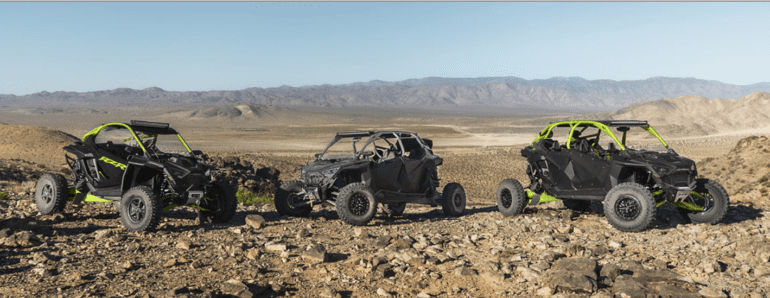TL;DR:
- Polaris, a powersports vehicle manufacturer, utilizes machine learning for financial planning.
- They aimed to enhance forecasting accuracy, refine cost projections, and foster collaboration.
- Polaris streamlined its ERP systems and adopted AI and ML tools, including Sensible ML.
- Tests showed that ML forecasts were more accurate than traditional ones.
- The company plans to automate processes and extend financial forecasting.
- Polaris demonstrates how embracing ML can revolutionize financial excellence.
Main AI News:
In the competitive world of powersports vehicles, Polaris, headquartered in Medina, Minn., stands out as a leader in innovation and customer experience. What sets them apart? It’s not just the design of their on- and off-road vehicles; it’s their strategic embrace of cutting-edge technology, specifically machine learning, to revolutionize financial planning and forecasting.
Polaris has been on a journey of expansion through acquisitions, broadening its portfolio and market reach. Concurrently, the company has been diligently upgrading its technological capabilities, with a particular focus on the finance department. Melanie Hermann, Polaris’ Finance Director of Process and Systems, shared their key objectives: enhancing forecasting accuracy for parts and materials, refining revenue and cost projections, fostering collaboration with partners, and facilitating overall company growth.
To kickstart this transformation, Polaris’ finance team recognized the need for a more efficient systems management strategy. With approximately 15 different ERP systems in use, primarily acquired through acquisitions, holistic planning and forecasting at an enterprise level proved challenging. The solution? Transitioning from Oracle Hyperion systems to OneStream’s equivalent systems was a move that involved meticulous data migration and metadata upkeep.
With their ERP systems streamlined, Polaris turned its attention to automating demand forecasting. The finance team delved into DataRobot’s AI and machine learning tools, leveraging the expertise already present in the company’s data science department.
According to Rob Kugel, Senior Vice President and Research Director at Ventana Research, AI and machine learning offer compelling use cases for finance departments. “Today, we spend so much time preparing a budget, and some of that is just organizational,” Kugel noted. “But what if we could significantly reduce that time? In theory, instead of taking two or three months to put together a budget or annual forecast, you could do it in a few weeks.”
As Polaris experimented with AI and ML technology, OneStream introduced Sensible ML, a machine learning product seamlessly integrated with both OneStream and DataRobot. Melanie Hermann saw this as a sign they needed to embrace AI and ML wholeheartedly in their financial operations.
“We wanted to understand better what indicators drive our business, correlate better with all of our businesses, and do a better job with financial planning,” Hermann explained. The goal was to model financial scenarios under various conditions over the next two years.
To assess Sensible ML’s suitability, Polaris conducted extensive tests, primarily focusing on their off-road vehicle segment. Raw data from multiple sources, including ERP systems, Snowflake data warehouse, and DataRobot outputs, was ingested into the OneStream relational database. The data was then used to train the model, incorporating historical patterns, similar product data, and economic indicators.
The results were remarkable. Matt Kohorst, a finance system architect at Polaris, elaborated, “We could see that the ML system over this known historical period is forecasting more accurately than our traditional non-ML forecast. On that basis, you know you’re going down a good path.”
Convinced of the power of the ML approach, Polaris embarked on a “2.0 version” journey, migrating all data and related processes into OneStream using its relational engine and data integration tools. This included incorporating additional internal data on warranties and promotions, factors traditionally considered drivers of the business.
The next phase involves automating the entire process for monthly execution and extending the financial forecasting timeline from 18 to 24 months. Additionally, Polaris plans to expand financial forecasting from the off-road segment to the on-road segment, further solidifying its position as a pioneering force in financial excellence within the power sports industry.
Conclusion:
Polaris’ strategic embrace of machine learning in financial planning not only enhances its operational efficiency but also positions it as a forward-thinking player in the powersports market. Their ability to forecast with greater accuracy and agility can give them a competitive edge, setting a new standard for financial excellence in the industry.

